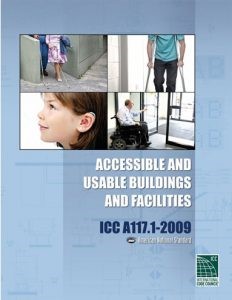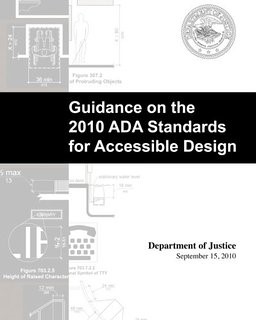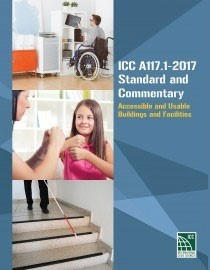Should You Still Be Concerned About A117.1?
Update: A new ICC A117.1 was published soon after this blog post. From our understanding, there were no significant changes made in this document relating to handrails and railings.
The original plan was that a new version of A117.1 would be published every five years. The next one will be scheduled for 2022.
While this standard doesn’t have the power of the Justice Department behind it the way that the Americans with Disabilities Act (ADA) does, it is still being used as a standard for facilities that are not covered by the ADA.
Published by the American National Standards Institute (ANSI), ANSI A117.1 Accessible and Usable Buildings and Facilities provides standards used for the specification and construction of accessible facilities.
But what should you use today for creating an accessible facility? The Americans With Disabilities Act Standards for Accessible Design (ADASAD) or ANSI A117.1?

Let’s take a look at a little history first.
The original ANSI A117.1 was created in 1986 and was overseen by the Council of American Building Officials (CABO). As it pre-dated the introduction of the ADA, if you were interested in using an accessibility standard for your project, this was the document to use.
With the merging of the various code bodies in 1999, the standard is now overseen by the International Code Council (ICC).
The ANSI standard was to be updated on a five-year cycle, however, the most recent version is the 2009 edition. The lack of an update is likely a result of the approval of the ADASAD in 2010.
When the ADA was approved as a civil rights law in 1990, it also included its own set of guidelines—The Americans With Disabilities Act Accessibility Guidelines (ADAAG). The ADAAG was basically a copy of the 1986 ANSI standard.
The problem was that by the time the ADA was approved as a law, CABO had updated ANSI A117.1 in 1990. ADAAG was therefore out of sync with the new ANSI standard.

However, the federal government moves slowly and those changes were not approved by the Access Board until 2005 and were not approved by Congress until 2010 with the publication of the ADASAD.
With the updated ADASAD, the importance of ANSI A117.1 was diminished. As a civil rights law, failure to comply with the ADASAD subjected building owners to discrimination suits. As a standard, ANSI A117.1 has no enforcement requirement.
However, while ANSI A117.1 has not been updated since 2009, hearings are underway to review suggestions for changes and updates.
For now, ANSI A117.1 has been overlooked by the ADASAD. It will be interesting to see what the new ANSI A117.1 will look like once the dust settles.

